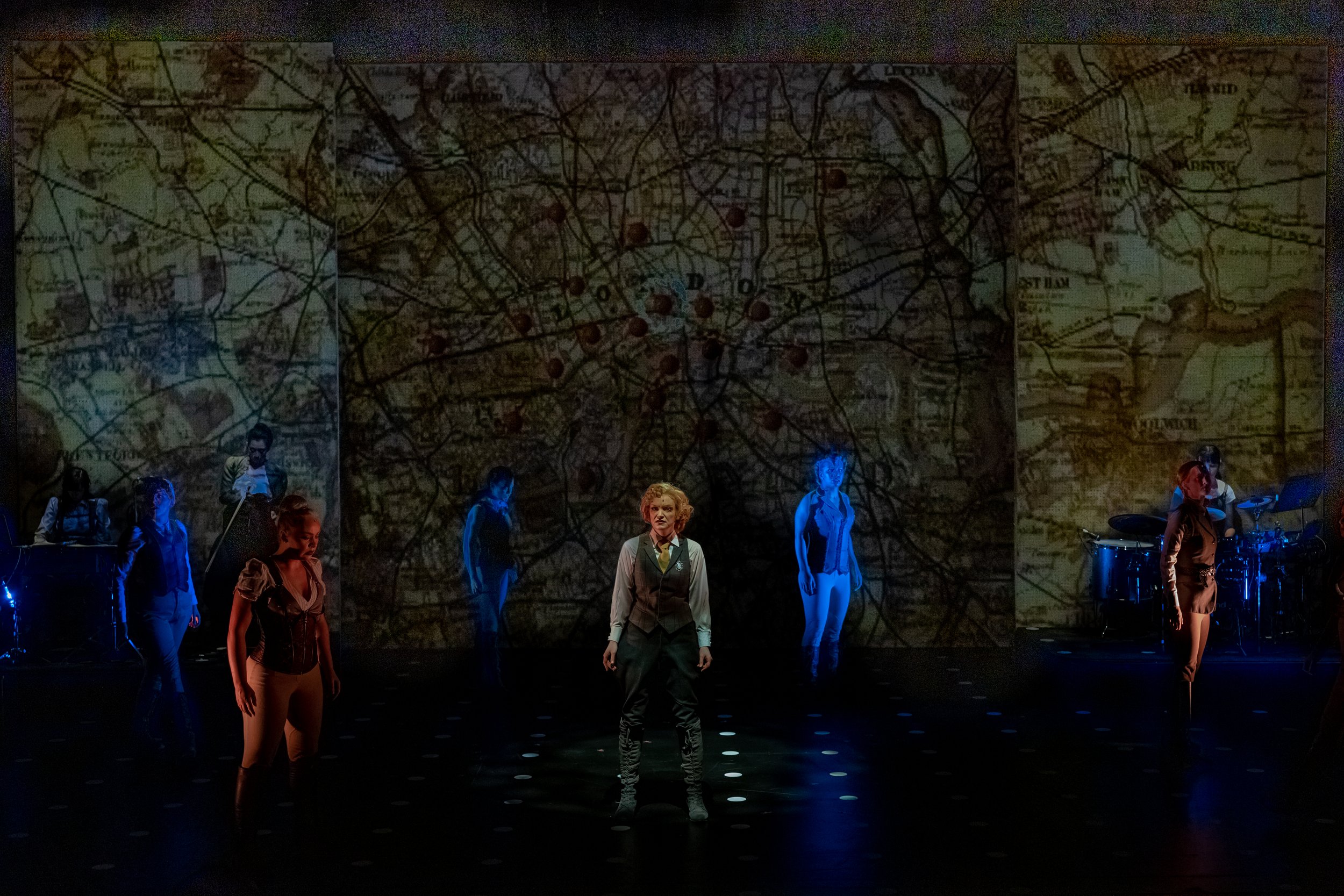Theatre review: The Invisible: Agents of Ungentlemanly Warfare proves fiercely inspiring
Jonathan Christenson’s musical-theatre piece inspired by the only women to be given combat roles in World War II is bold, suspenseful
The Invisible. Photo by DB Photographics
The Cultch presents The Invisible: Agents of Ungentlemanly Warfare until May 7 at the York Theatre
FIERCE AND INSPIRING female characters, a gripping storyline drawn from real events of World War II, an immersive soundscape that sometimes rumbles and vibrates throughout every corner of the theatre, film-noirish lighting, and Broadway-style songs that swing from catchy to soaring: The Invisible: Agents of Ungentlemanly Warfare is brilliant.
Written and directed by Edmonton-based Catalyst Theatre’s Jonathan Christenson, the production takes its inspiration from what was known as the Special Operations Executive, which, during the Second World War, Winston Churchill ordered to “set Europe ablaze!”. The female agents who were recruited for the unit from across Europe, North America, Australia, and Asia were the only women who were allowed by the Allies to play a combat role in the battle, giving them a natural advantage over men walking the streets of Europe: no one would suspect them of contributing to Hitler’s downfall. Focused on sabotage, subversion, and guerrilla warfare against the Nazis, their mission involved blowing up trains, bridges, tunnels, and factories. After intense training alongside male soldiers in Scotland, the women were parachuted into German-occupied nations, where they executed crucial, unseen work.
The Invisible is not a retelling of this piece of history; and although Christenson’s detailed, suspenseful, dramatic script is fictional, it certainly feels real. The narrative takes on chilling resonance with war raging in Ukraine and lines like “What would you be ready to lay down your life for?” as civilians there step up to fight Russia.
Evelyn Ash (Melissa MacPherson), who narrates, is tasked with recruiting the “girls” and keeping in touch with them via Morse code. She is commanding and, from a distance, maternal. Dorothy (Kristi Hansen) is a scholar who wanted to be a diplomat but was held back because of a horseback riding incident that resulted in the amputation of one leg below the knee. (In real life, Hansen was born without a fibula on one side.) Jacqueline (Kaylee Harwood) lost her husband to the Nazis and leaves her eight-year-old daughter, Sonia, to fight, proving to be a sharp shooter. Madeline (Sarah Nairne) is a Black chanteuse whose mother made ends meet as a courtesan following the early death of her Senegalese father. Betty, played by Amanda Trapp, is a Cree woman who attended residential school and knows what it’s like to live in an occupied land; she’s especially good with explosives. (Trapp is Saulteaux/Austrian artist and member of the White Bear Band.) Tahirih Vejdani’s Anna, a Muslim agent, is the fastest at Morse code but the unit’s weak link, unable to conceal her identity in practice questioning sessions. Justine Westby’s Szarlotta calls the shots when chaos breaks out.
The audience follows the unit from the moment its members first meet to their pre-battle training to their work behind enemy lines. These women embrace the lives they didn’t choose, each one illustrating strength and grit in their own way. Chaptering their stories are songs that draw on everything from jazz, soul, gospel, and funk to spoken word and opera. Nairne’s Madeline dazzles in a Cabaret-inspired number; elsewhere, all seven performers—each one commendable—harmonize as beautifully as any choir.
It’s all enhanced by Matthew Skopyk’s sound design and Bretta Gerecke’s lighting. Early on, while Evelyn is describing German attacks, red dots appear on an old, yellowing map of London projected on a backdrop, each splotch landing in time with a plunk of a piano note, over and over and over again like so many falling bombs. We occasionally hear a deep boom thundering throughout the York Theatre, the chugging of a train, or the roar of aircraft overhead. Sometimes stark and brooding, the lighting design also makes creative use of the simple wooden chairs that dangle from the ceiling when the cast members aren’t using them as props: they light up and flash to evoke blasts that Betty takes particular pride in.
The Invisible is bookended by a disturbing Romanian fairy tale inspired by Vlad the Impaler (initially, it perplexes); as Evelyn notes, it’s no Winnie the Pooh. It’s just one more unconventional creative choice by Christenson that makes The Invisible unlike any other piece of musical theatre you’ll see this year. It’s one that will stay in your mind as vividly as the explosions its special operatives pull off as successfully (or even more so) as any man.













